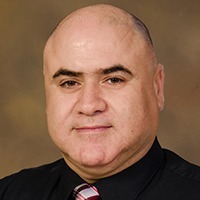About Us
At Children's Nebraska, our Endocrinology experts specialize in the care of children from infancy through adolescence with endocrine disorders. The endocrine system plays a vital role in regulating growth, metabolism, reproduction and other key functions by producing hormones that affect various parts of the body. When these hormones are out of balance, it can lead to disorders that affect your child’s development and overall health.
Our team consists of pediatric endocrinologists, pediatric nurse practitioners and physician assistants, nurse educators, social workers, case managers, dietitians and behavioral health specialists, all working together to provide comprehensive evaluation, monitoring and treatment for a wide range of endocrine conditions. This includes conditions like diabetes, thyroid disorders, puberty concerns, growth issues and more. We combine cutting-edge medical care with personalized treatment plans to ensure your child’s wellbeing and long-term health. At Children's, we support the whole child, addressing both the medical and emotional needs of our patients and offering ongoing support through a wide range of resources.
Contact Us
Conditions We Treat
We treat a variety of endocrine conditions in children, including growth issues, thyroid disorders, diabetes and hormone imbalances.
Resources and Education
Diabetes Tools & Resources
Explore helpful resources and information to support you and your child in managing diabetes and maintaining their health.
Diabetes Patient Education
Get answers to your questions about caring for a child with diabetes. These Teaching Sheets are PDF files that are easily downloadable and printable for your convenience.
Meet Our Providers






Treatments and Services
Our team of experienced providers is dedicated to delivering comprehensive, compassionate care tailored to each child’s unique needs.
Locations
Our endocrine clinics offer comprehensive care and specialized services to children and families across the region.
Children’s Nebraska Specialty Pediatric Clinic – Sioux City
Children's Nebraska Specialty Pediatric Clinic — Cass West
Children’s Nebraska Specialty Pediatric Clinic – Kearney
Children's Nebraska Specialty Pediatric Clinic – Lincoln
Related Specialties

Nephrology

Cardiology

Genetics

Gastroenterology, Hepatology & Nutrition

Rheumatology

Behavioral Health
Clinics and Programs
Cystic Fibrosis Center
Children’s Nebraska provides world-class care for children with cystic fibrosis, close to home.
Osteogenesis Imperfecta Clinic
Every child deserves to live an active, hopeful life. Our Osteogenesis Imperfecta (OI) Clinic offers compassionate care with a team of pediatric experts, providing personalized treatments to help your child live safely and comfortably.
Thyroid Clinic
If your child has a thyroid condition, our specialists at Children’s Nebraska offer expert care to help manage their health. Our multispecialty team, including pediatric endocrinologists and ENT specialists, provides comprehensive treatment and support.
Next Steps
Step 1: Contact Us
Your child will need a referral from their primary care provider to participate in sports physical therapy. Once the referral is in, call 402.955.8181 to make an appointment.
Step 2: Schedule a Consultation
During the consultation, we’ll assess your child’s condition and goals and make recommendations.
Prepare for Your Visit
What Sets Us Apart
Multidisciplinary Care
Our team includes pediatric endocrinologists, nurse practitioners, dietitians, social workers and other specialists, ensuring that every aspect of a child’s endocrine health is addressed.
Advanced Diabetes Management
We offer advanced tools like insulin pumps, continuous glucose monitors and expert education to help children and families manage diabetes effectively.
Personalized Plans
We provide individualized care tailored to each child's specific endocrine needs, from growth hormone therapy to managing thyroid and puberty concerns.



